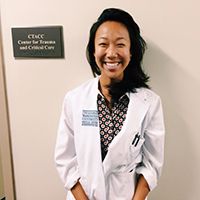Yodit Beru, who is in the Community Health Track, worked at Holy Cross Health Centers, a network of health clinics for the uninsured in Montgomery County, Md., where she designed and administered a needs assessment survey to determine patients' access to the internet and interest in using patient portals to communicate with their healthcare providers. “My interest is in health disparities, so this aligned well,” Beru said. “I’m glad to have had the opportunity to get firsthand exposure to the workings of a clinic like this — a place where I could see myself working once I have my medical degree.”
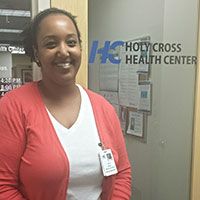
Allison Ikeda, who is in the Research Track, spent 10 weeks at the National Institutes of Health Laboratory of Malaria and Vector Research, analyzing blood samples she collected and processed as part of a two-year clinical study that is examining the presence of vascular dysfunction during severe malaria in Malawian children. Prior to starting medical school, Ikeda to work in the research ward at Queen Elizabeth Central Hospital in Blantyre, Malawi, as part of the study. There she performed occlusion-reperfusion tests on Malawian children with severe malaria, uncomplicated malaria, and healthy children. “This experience allowed me to witness first-hand how discoveries in the laboratory could be translated into the clinical setting, and how observations in the clinical setting could alter our understanding of the disease-state in the laboratory,” she said. The work solidified Ikeda’s desire to become a physician-scientist, and strive to support clinical observations with findings in the laboratory and vice versa. Ikeda’s research will soon culminate in a manuscript describing metabolic changes occurring in blood during a clinical episode of severe malaria, and the impact these changes have on tissue perfusion and endothelium-dependent vasodilation.
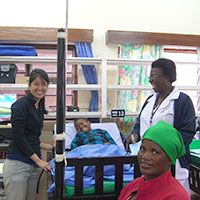
Laura Johns, who is in the Medical Education Leadership Track, spent eight weeks working on a qualitative research project with Leana Wen, M.D., director of patient-centered care research and instructor of emergency medicine at the GW School of Medicine and Health Sciences. The purpose of the project was to determine the type of information patients were interested in knowing about their physicians, including age and gender and whether that information would increase or decrease trust between patients and physicians. Johns conducted a background literature review then put together a short survey. Once completed, she surveyed to a broad cross section of people in Washington, D.C. about physician background information. The data was transcribed, coded, and analyzed. “I learned a lot about qualitative research methods,” she said. “From creating a survey to coding it effectively, it was an interesting process.”
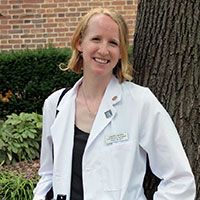
Sonia Silinsky Krupnikova, who is in the Medical Humanities Track, spent the summer at the University of Maryland College Park (UMCP), working in the Department of History with Bernard Cooperman, Ph.D., professor of Jewish history at UMCP. Krupnikova’s internship expands on a paper she wrote for Cooperman’s class as an undergraduate at UMCP about an eccentric thinker named Ephraim Menachem Epstein. At various points in Epstein’s life, he was an Orthodox Jew, a Baptist minister, a Freemason, a Russian, an American, a farmer, a medical missionary, a doctor, an educator, and an editor of a medical journal under the watchful eye of W.C. Abbott, the founder of Abbott Laboratories.” Her undergraduate paper took a broad look at the earliest precursors of the American medical profession in the 19th Century and the effect advertising and patenting had on them. This summer Krupnikova further examined the specific type of medicine Epstein practiced. “It seems to be another middle ground that Epstein occupied: one between homeopathic medicine and allopathic medicine,” she said. Krupnikova is trying to figure out exactly what this practice was, why it was so different, and why Epstein came to practice this way in the first place. She hopes to submit her completed paper for publication in a peer-reviewed journal.
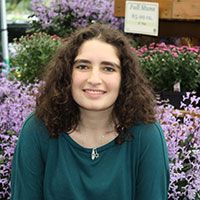
Adrianne Lazer, who is in the Emergency Management Track, worked at the GW Institute for Crisis, Disaster, and Risk Management, where she completed a project titled “Analyzing Toxic Inhalation and Developing Incident Management Guidance for Mass Inhalation Injuries.” Lazer worked with emergency management professionals, emergency medicine and critical care experts, and emergency medical services (EMS) officers to contribute to redesigning and improving mass inhalation medical care. “I’ve always been interested in how to manage disasters because in the moment it’s so hectic,” said Lazer. “My favorite experience of the internship was attending a decontamination training, where I was trained in operating personal protective equipment and learned how to decontaminate victims arriving at the hospital.”
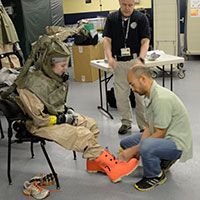
Jay Lee spent eight weeks at Children's National Health System working in the Center for Cancer and Immunology Research. Under the direction of Steven Zeichner, M.D., Ph.D., professor of pediatrics at GW School of Medicine and Heath Science and Sohrab Khan, a post-doctoral research fellow at Children's National, Lee was responsible for determining whether apoptosis, or cell death, induces a change in the life cycle of latent herpes simplex virus (HSV) in human tonsils. “By treating tonsils with activators of apoptosis including many antibiotics or inhibitors of apoptosis like caspase 3 inhibitors, where caspase 3 is an inducer of apoptosis, we hope to see the production of HSV, as well as determine what cellular pathways are altered,” he said. Having the opportunity to practice several protocols allowed Lee to explore research from a translational perspective including the manipulation of human tissues through processing and antibiotic treatment, cell culturing, and real-time PCR. For Lee, this experience highlighted the difficulties of translational research in both depth and practice.
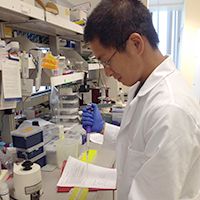
Adam McFarland, who is in the Global Health Track, worked with the United States Naval Medical Research Unit-6 in the Amazonian city of Iquitos, Peru, where he assisted with a clinical trial to evaluate Artesunate resistance in Plasmodium falciparum. “I know the experience I gained in Peru will be invaluable to me in my career, as many of the burdens that exist in Peruvian healthcare and rural communities are applicable to the United States,” McFarland said. “The internship helped expand my knowledge and passion for helping underserved communities both domestically and abroad, which I hope to bring into whatever field I choose in the future.”
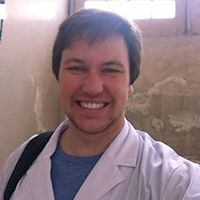
Aislynn Raymond, who is in the Medical Education Leadership Track, spent eight weeks interning with the Global Health Service Partnership (GHSP), a program between the Peace Corps and Seed Global Health that sends American physicians and nurses to medical schools in Malawi, Tanzania, or Uganda to spend one year as visiting faculty. Raymond helped with GHSP volunteers orientation. Before they go to their posts, volunteers received refresher courses on topics in tropical medicine and medical education, as well as Peace Corps policy training. Volunteers also learn about Peace Corps policies. The experience gave her a greater appreciation for the coordination and work required to create and support a program like GHSP. “I learned about diagnoses and treatment of tropical dermatology problems, trauma and injury, malaria, parasites, and diarrheal illness,” she said. “I also learned about current theories and trends in medical education, as well as how the structure of U.S. medical education differs from that in Tanzania, Malawi, and Uganda.
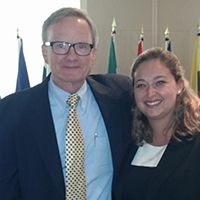
Shivani Shah, who is in the Integrative Medicine Track, worked with the GW Center for Integrative Medicine, where she conducted research for a yoga therapy initiative and co-taught meditation and pranayama classes with the goal of reducing stress and improving mood and sleep quality. “One of the great things about integrative medicine is that they focus on different ways to treat the patient based on their lifestyle,” she says. “It’s given me a different perspective from what I’ve learned in classes and lectures, and I look forward to using it throughout my career.”
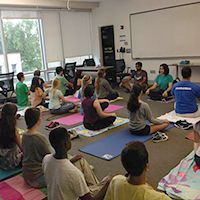
Joshua Sohn spent the summer at the Navy Medicine Professional Development Center in Bethesda Md., setting up a case control study on Chronic Multisymptom Illness, which affects thousands of veterans of the Gulf War, Operation Enduring Freedom, Operation Iraqi Freedom, and Operation New Dawn. Sohn worked in conjunction with the DoD Serum Repository, which houses serum for all military members, to determine if there is a connection between illness and Chronic Bacterial Infection. He attended meetings with leaders from the Center of Disease Control and Prevention, Naval Medical Research Center, Army Institute of Research, and the Armed Forces Health Surveillance Center. The experience is invaluable for Sohn, who plans to pursue a career as a physician in the United States Navy. “I learned the intricacies of setting up an experiment from the ground up and having to coordinate between multiple different research groups.”
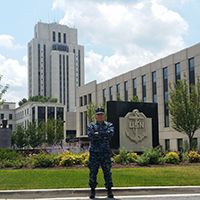
Adam Spring and Anne Waldrop, who are in the Global Health Track, worked for Omni Med in the Mukono District of Uganda, where they educated and trained recently elected village health teams on preventative health strategies. “Our time in Uganda has approached issues of public health from multiple angles, said Waldrop. “From our primary role in educating villagers in preventative health, to analyzing slides of malaria in the local health center, and in building clean cook stoves for village women, we have benefitted from the diversity of our experiences in our time here.”
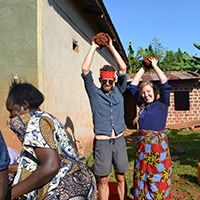
Sojung Yi, who is in the Emergency Management Track, worked with Trauma and Acute Care Surgery at the GW Medical Faculty Associates, where she completed a project titled “Implementation of Evidence-Based Practice Management Guidelines Improves Mortality in a Trauma Center.” Yi was responsible for conducting a retrospective study evaluating how the development and implementation of a series of evidence-based clinical practice guidelines led to a decrease in mortality in trauma patients at GW. I’m really grateful that I’ve had the opportunity to learn from this tight-knit, dynamic, and passionate multidisciplinary trauma team,” Yi said. “I’ve always been interested in trauma surgery and health systems at-large, and this experience has only strengthened my desire to elevate trauma care as an essential component of broader health system improvement.”
